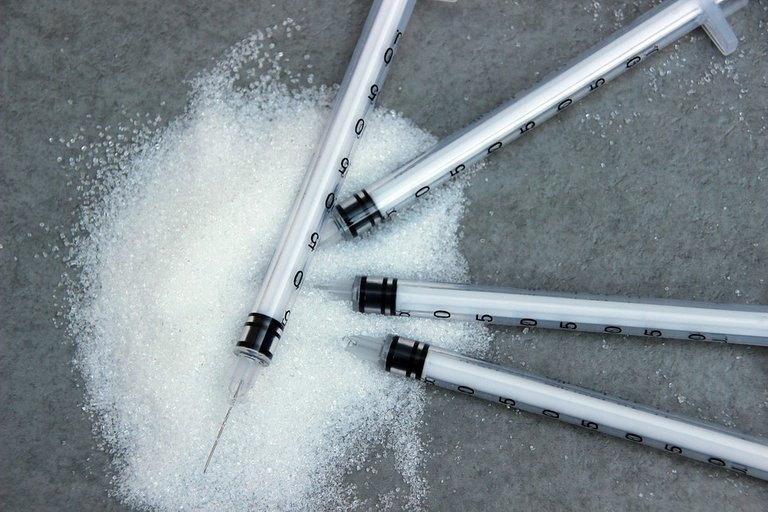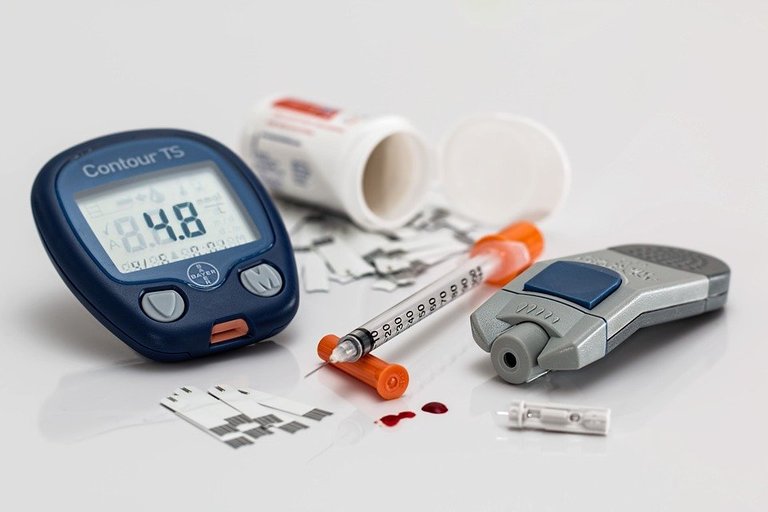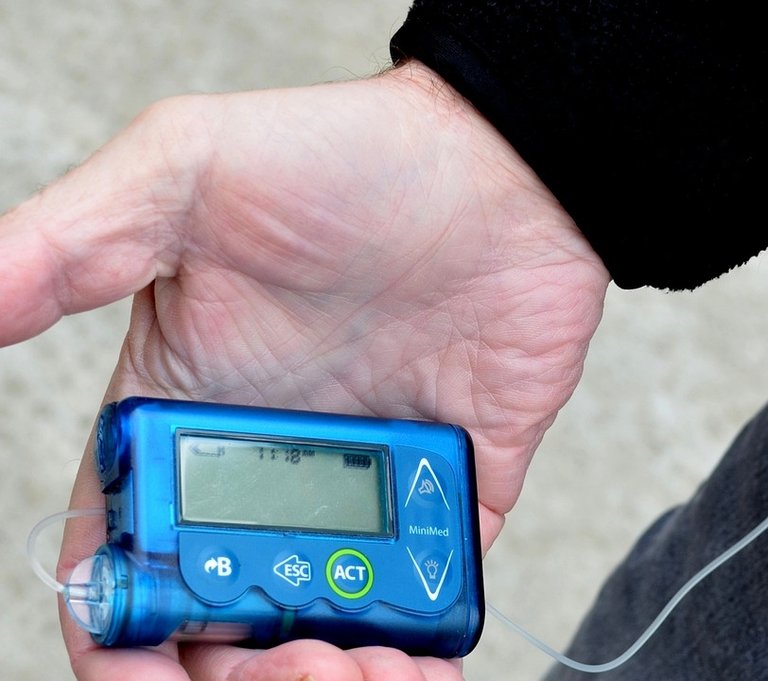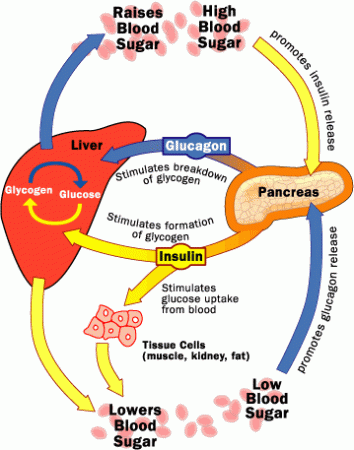Chances are good that you either know someone with diabetes mellitus, commonly called diabetes, or have it yourself. As of 2015, 30 million Americans, or roughly 10% of the population, are living with this ticking time bomb of a disease, paying out an incredible $245 billion dollars in medical costs in 2012, while remaining the 7th leading cause of death in this country.

Of the 30 million Americans, there are 193,000 under the age of 20, with 23,200 more being diagnosed every single year.
If we are to have a chance at combating this problem, we need to start by understanding what exactly diabetes is in the first place.
Let's begin by meeting the pancreas, and how it plays a role in determining how much sugar is in your bloodstream.
The Pancreas
The pancreas is a 6 inch (15 cm) long organ that sits posterior to both the stomach and liver, and has a direct connection to your small intestines through a structure called the duodenum, which is simply the first portion of the small intestine. The pancreas is both an endocrine and exocrine gland, which means that it secretes into both the bloodstream and the digestive tract.
Inside of the pancreas are roughly 3 million or so cells, called the Islets of Langerhans. These cells come in 4 different types, Alpha, Beta, Delta, and Gamma, each of which produce and secrete a different hormone.
Our focus today will be on the alpha and beta cells, which produce the hormones insulin and glucagon, which are the regulators of glucose levels in the bloodstream.
The Role of Glucose in the Body
When you consume a meal, the food is broken down into it's most basic components so that it can be utilized by the body. One of these basic components is glucose, a sugar molecule that is used by cells to create energy in the form of ATP, or adenosine triphosphate. Without ATP, cellular functioning could not occur, resulting in death of the organism. The goal here is to get glucose inside the many cells of the body, thereby allowing the synthesis of ATP.
As glucose levels rise in the body, the beta cells respond to the elevated sugar levels by releasing their stored insulin into the bloodstream. As insulin courses through the blood vessels, it binds to the cells of the liver, skeletal muscle, and fat cells, causing excess glucose to be stored in the form of glycogen in the liver and muscle tissue, and as triglycerides in the fat cells.
As time progresses, we eventually begin to feel hunger, and the liver is signaled to break down its stored glycogen into glucose. This is accomplished through the hormone glucagon, which is secreted by the alpha cells of the pancreas.
Ideally, there should be a balance between insulin and glucagon levels in the blood. Too much of either can create serious issues within the body, one of them being the topic of today's discussion.
Type 1 Diabetes
Formerly known as juvenile diabetes, Type 1 is the inability to produce insulin at the necessary rate for metabolic functioning, if at all. The reasons for this can be individually dependent, but it's usually because of an auto-immune response from the B and T-Cells of the immune system.
B-Cells are immune cells that produce antibodies, which are protein complexes that bind to their target, immobilize them, and mark them to be destroyed by immune cells known as phagocytes. Normally, antibodies are only produced when an invading organism such as bacteria is present in the body. To avoid antibodies being produced that target our own cells, a corresponding T-Cell is required to activate the B-Cell, providing it with "permission" to produce the antibody.
In Type 1 diabetes however, this system breaks down, and T-Cells activate the B-Cells that are specifically matched to the beta cells of the pancreas. The result is the destruction of the beta cells, which means insulin cannot be produced, and blood glucose levels will begin to skyrocket.
To be clear, this is only one cause of Type 1 diabetes.
As glucose begins to accumulate in the bloodstream, a plethora of symptoms begin to arise:
- Extreme thirst
- Frequent urination
- Lethargy
- Unusually high weight loss (despite increased appetite)
- Blurred vision
- Acetone smelling breath
- Slow-healing wounds
- Yeast infections
Type 2 Diabetes
The symptoms are going to be more or less similar to Type 1, yet the cause is going to be completely different. In this case, the cause is almost always diet related, but other factors definitely play a role, such as genetics. While not necessarily a direct cause in and of itself, obesity has an obvious correlation to the disease. However, it must be stated that being obese does not mean that type 2 diabetes will manifest.
In someone who has a normally functioning pancreas, beta cells will secrete insulin when glucose levels rise due to eating a meal. Normally this isn't an issue, and as we saw earlier, it happens to be necessary. But as with most things, too much of a good thing can become bad. In this case, it can become lethal.
While carbohydrates aren't the only culprit when it comes to inducing an insulin response, it is by far the biggest contributor, as can be seen here, in what's called the insulin index.
When an individual consumes high amounts of insulin responsive foods, their bloodstream becomes saturated with the hormone, which causes the body to slowly become insulin resistant.
Insulin resistance is essentially when the body stops "listening" to insulin. This causes blood glucose levels to get higher and higher, which then drives more insulin production in an attempt to get the cells to respond to insulin. It's similar to yelling louder and louder at someone because you think they can't hear you, but it turns out they are simply ignoring you. Eventually you'll get a response, but you had to dramatically increase the effort to achieve it. Obviously this isn't sustainable.
Treatment
Depending on which type of diabetes someone has, treatment is going to be different. Even individuals with the same type of diabetes may treat the disease differently, which is something their physician would guide them through.
Type 1
The body needs insulin — plain and simple. If the beta cells aren't producing it, it must be brought into the body from an external source. That source used to be insulin from other animals, such as dogs and cows. Nowadays, insulin can be produced in a laboratory setting, at near limitless amounts.
Monitoring Blood Glucose & Administering Insulin
Over the course of an average day, insulin and glucagon levels will rise and fall depending on when you eat, how much you eat, and the type of food you eat. In an individual with a healthy pancreas, the alpha and beta cells respond autonomously to these metabolic changes, ensuring that blood glucose levels remain in a normal range. For a type 1 diabetic, they must check their blood glucose levels throughout the day, and not just administer insulin at the correct point after meals, but also the correct type of insulin to begin with.
There are 4 basic different types of insulin produced by the pancreas:
- Rapid-acting
- Short-acting
- Intermediate-acting
- Long-acting
Each type of insulin has a different effect on blood glucose levels, so a carefully timed strategy must be formed to attempt to mimic a normal functioning pancreas.
This can be accomplished a couple of different ways , which include:
Insulin injections and a blood glucose monitor. This involves pricking the finger with a needle, allowing for a reasonably accurate insulin measurement to be taken.

Insulin pumps, which automatically administer the type of insulin needed at that point in time. Insulin pumps have a very small needle that feeds directly into the fat in the abdomen, and can be worn underneath an individuals shirt.

Monitoring Diet
Certain individuals elect to forgo insulin entirely, and instead carefully monitor their diet. This is seen as highly risky, and shouldn't be done without consulting a physician. The reasons for choosing this route is that insulin can cause weight gain, low blood sugar, headaches, hunger, fatigue, sweating, rapid heart rate, and fainting, to name a few.
Individuals who elect to use insulin injections are also required to watch their diet. Diets low in carbohydrates are an absolute necessity if one desires to make the disease the least impactful on their health.
It should also be noted that exercise can change blood glucose levels, seeing as how the muscles require glucose to operate. If someone is choosing to follow an active lifestyle, they will need to monitor their glucose levels accordingly.
Type 2
The treatment for type 2 is much less complex than type 1, however, that doesn't mean it is easy. A strict adherence to a diet low in carbohydrates is necessary if one wishes to lead a reasonably normal lifestyle. In fact, an individual who follows a healthy low carb diet can potentially experience no symptoms at all, however, this is not the case with everyone.
Exercise is always recommended, especially if obesity is part of the problem. The important thing to remember here is that physical activity will cause blood glucose levels to drop, meaning risk of hypoglycemia increases dramatically.
Medications
Metformin is by far the most common type of medication used to treat type 2 diabetes, but is by no means the only one. Metformin acts to raise insulin sensitivity, making the cells more receptive to insulin and effectively reducing the effects of the disease. However, as with most medications there are going to be side effects. Nausea, vomiting, and diarrhea are just a few.
Insulin is also a potential treatment with type 2 diabetes, and in recent years has become a common route to take early on after diagnosis. While timing of injections isn't nearly as important as it is with type 1, abuse of the insulin can result in extremely low blood sugar, and a vast array of other symptoms.
In Summary
We have only scratched the surface when it comes to discussing diabetes mellitus. Considering how long this post already is, I plan on doing a more detailed post on the matter in the near future. We are yet to discuss the many complications that can arise from elevated insulin levels, how to craft a insulin injection strategy around meals, and how the disease can impact life expectancy in the long term. However, this is a great place to start.
So what is diabetes mellitus?
Diabetes mellitus is a disease in which the body is unable to lower blood glucose levels. This can result from the inability of the pancreas to produce and secrete insulin from its beta cells (Type 1), or from what's known as insulin resistance, which is when the body's cells become less responsive to insulin (Type 2).
Symptoms are quite similar for both manifestations of the disease, but treatment can be vastly different. Type 1 is typically treated with insulin injections, which are timed efficiently around meals. Type 2 is typically treated through dietary restrictions, exercise, and medications such as Metformin.
Thanks for reading! See ya next time!
If you enjoyed this post, here a few others that might interest you!
What Is Dandruff??
What Is Asthma?
What's the Difference Between a Strain and a Sprain?
How Do Skeletal Muscles Contract??
What Is a Heart Attack?
Why Are Human Babies So Incredibly Weak???
Why Is Your Butt So Big???
Evolution, Society, and Cryptocurrency... How Does It All Relate???
Let's Learn Anatomy #1 - Nomenclature
Let's Learn Anatomy #2 - Atoms, Molecules, and Chemistry
Let's Learn Anatomy #3 - Basics of Biochemistry
Let's Learn Anatomy #4 - Amino Acids and Proteins






Great post @justincottle! :) So, let me just check if I got this right as for diabetes mellitus : The pancreas is still producing insulin, BUT the cells are no longer responding to its signals? Did I get this right?
I am looking forward to your next posts on this topic. I am very interested in understanding gluconeogenesis , and I am sure you could write about it in a very straight-forward way!
Thanks for sharing this with us!
Best.
Thanks @abigail-dantes! I always appreciate your kind words!
You nailed it though. Type 2 is when the pancreas is still producing insulin, but the the cells aren't "listening". In Type 1, the pancreas isn't producing insulin at all, or if it is, it's at an extremely low rate compared to what's needed.
I would love to write about gluconeogenesis, and everything to do with glucose metabolism! The body's ability to synthesize glucose from muscle and Amino Acids is incredible.
Thanks for the idea!
Thank you for your reply @justincottle. I got it now!
Before reading your post I thought there was no production of insulin in both types of diabetes.
Excellent!
:D
I'm glad it helped! Thanks again!
I'd read in one article that said one of the sign that we have diabetes is when our drops of urine is surrounded by ants. Its mean that our urine still have glucose in it and it can be an indicator that in our blood, there is big amount of sugar. Cmiiw. Nice post @justincottle :)
Thanks @nadhiljanitra!
While ants surrounding your urine is a possible indicator you have diabetes, it also could mean that you ingested high amounts of sugar, and it's simply being filtered out by the kidneys. Doctors used to taste urine to determine sugar content, but nowadays it's a lot easier with blood tests. I would say that it's probably a good idea to get tested if you find ants attracted to your toilet however. Better safe than sorry!
Join us on #steemSTEM / Follow our curation trail on Streemian
Thank you for this very interesting article. It has been advertised on our chat channel (and upvoted).
The steemSTEM project is a community-supported project aiming to increase the quality and the visibility of STEM (STEM is the acronym for Science, Technology, Engineering and Mathematics) articles on Steemit.
Awesome! Thank-you!